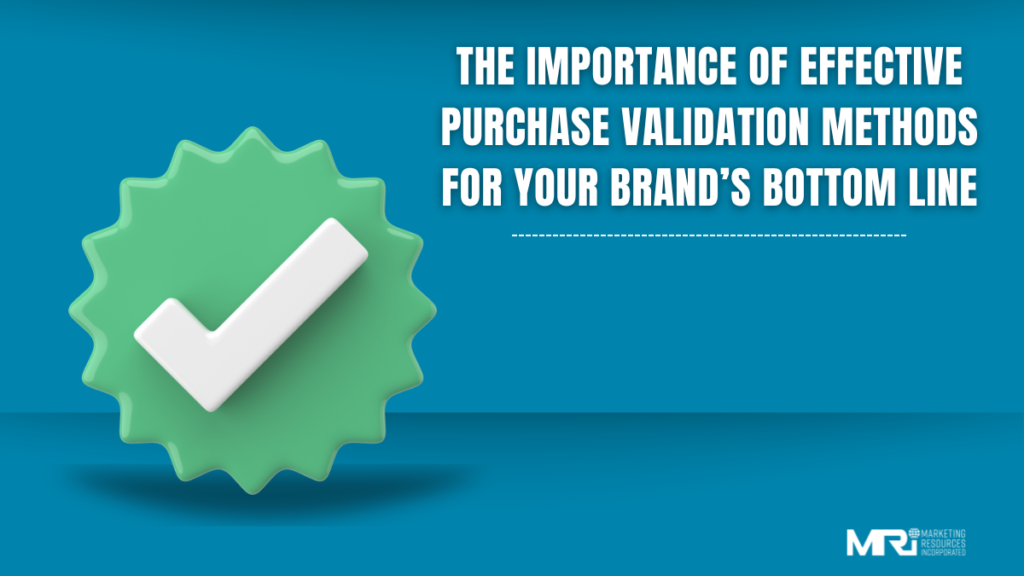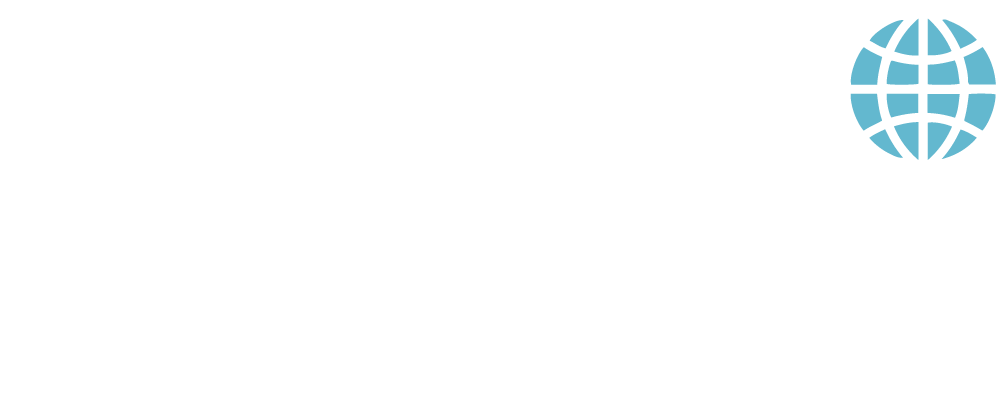What’s the one question that all marketers struggle to answer? “What’s the ROI?” Or, basically, “how does this impact our brand’s bottom line?” We’ve all heard it before and, trust us, it’s enough to send a few shivers down your spine. Sometimes, pointing to ROI can be difficult or even impossible.
At the end of the day, the success of your campaigns depends on your ability to prove that they were worthwhile. Did they increase sales? By how much? Did your campaign account for a boost of traffic to your site? How do you know?
Thankfully, at Marketing Resources Inc., our team of promotional marketing experts has come up with a number of ways to make it easier for your brand to not only track a program’s ROI, but improve it as well. With our effective purchase validation methods, you can rest assured knowing that any promotional campaign we administer for you will encourage desired actions from your consumers, and will be tracked with real-time data and analysis.
What is Purchase Validation?
“Purchase Validation” is the process of confirming that an entrant to your promotional campaign has made a purchase. Simple enough. Or, is it?
When you choose to run a promotional campaign, you can also choose from a number of different purchase validation methods. Some make more sense than others, depending on the type of campaign you select and what you hope to achieve. But, all methods of purchase validation attempt to accomplish the same thing: encourage consumers to actually buy your goods or services.
Whether physical or digital, in-store or online, our promotional administrators can help you implement the right purchase validation method for your brand.
Purchase Validation and Legal Lotteries
Before we get any further, it’s critical to understand how purchase validation requirements impact your promotion’s legal administration.
A legal lottery contains three crucial elements:
– Prize- The incentive for participating
– Chance- The likelihood a participant will “win”
– Consideration- The method of participation, including purchasing a good.
At this time, only the federal government may run a legal lottery containing all three of the elements mentioned above. That means, if your brand hopes to execute a promotional campaign, you must eliminate either prize, chance, or consideration.
The easiest, most common way to eliminate one of the above elements is to offer an Alternate Means of Entry (AMOE) and remove the requirement of consideration. Meaning, your brand may still accept entries to a campaign in the form of a purchase, but you must also accept alternate entires that participants did not pay for.
For all the information you need regarding campaign legal administration and sweepstakes and contest laws by state, check out our full guide. Now, back to why you’re here: purchase validations.
Using Unique Codes to Confirm Purchases
A strategic and effective method of validating purchases is the use of unique codes. A full-service promotional marketing agency, we’ve developed over 50 billion (yes, with a B) secure unique codes throughout the last 3 decades.
If your promotion has an on-product or in-pack game piece, our production team will oversee and manage production and collaborate with your manufacturers to apply the game pieces to your product for a stunning visual code. Or, on the other hand, our team can create and distribute any number of unique digital codes to support your program, eliminating the need to print any new packaging.
Catch your consumer’s eyes and encourage them to buy your products with incentivizing unique codes. Not only that, but with unique codes, your brand now has the opportunity to directly tie the success of a campaign to its bottom line. Because each unique code is just that, unique, you can see exactly which products or services triggered what consumer behavior, simply by monitoring which codes activated engagement.
Keep in mind though, that not all variations of unique codes are created equally. As with every detail of your brand’s promotional campaign, how you choose to configure your unique codes will have massive impacts on the campaign’s results.
Concealed Unique Codes
As you determine precisely how to implement unique codes within your promotional campaign, consider the implications of concealing your unique codes. Just so we’re all on the same page, a “concealed unique code” is hidden from a consumer’s view until after they’ve purchased and own the product. Usually.
For example, a concealed unique code may be found printed on the inside of a box of cereal or underneath a cap on a bottle of soda. The point of a concealed unique code is to further encourage consumers to actually purchase the product containing the code. Of course, a consumer can open a package or look under the cap of a product they did not buy, but, they really shouldn’t. At that point, if a consumer goes so far as to open a sealed product without purchasing it, they probably aren’t a part of your target audience anyway.
Because the codes are “hidden” until a consumer has purchased the product, concealed unique codes make a far more effective purchase validation process than a code freely printed on the outside of a package. If the code itself is accessible to users, the more likely they are to redeem that code without ever making a purchase. This leaves your brand wondering why sales remained stagnant when campaign participation was seemingly through the roof.
By tying a unique code, and more specifically, a concealed unique code to your campaign’s participation, you can much more easily track engagement, success, and overall ROI of your campaign. This simple but impactful extra step forces users to purchase your products, as opposed to just gaming the system you have.
Validating Purchases with Geofencing
Another fantastic way to ensure your brand’s ROI remains a key focus of your campaign is to use geofencing as a method of purchase validation. Extremely popular with shopper marketing programs, geofencing triggers an action when a consumer has physically entered a predetermined location or region.
With geofencing, your brand can create online experiences and send targeted messages based on where your consumers are in the world. The possibilities are endless and exciting.
Because geofencing relies on a consumer’s physical location (and not what they do at that location), it takes a little bit of creativity to employ it as an effective method of purchase validation. Luckily, our team of experts has over 50 years of collective experience being creative with promotional marketing.
Event-based promotional campaigns benefit greatly from geofencing as purchase validation. For example, if your brand’s goal is to encourage consumers to visit a physical location, like a sporting event or conference, entice them to literally show up with the promise of a geofenced campaign. As soon as a consumer crosses the physical boundaries you’ve defined, they can effectively “validate” it through some sort of branded action, like completing a lead-gen form or proving that they’ve attended (and paid for) your brand’s event.
By digitally “locking” access to your brand’s promotional materials (like your landing page, lead-gen form, or official rules) to only those who are within a certain physical location, you can guarantee that anyone who participates should participate. With this in place, our promotional administrators can pinpoint the engagement your campaign sparks.
Receipts as Purchase Validation in Promotional Programs
Receipts, or secondary purchase validation methods, while still effective, usually occur a period fo time after the purchase has been made. Depending on the objective of your promotional campaign, a secondary purchase validation method triggers consumer engagement and continues the brand experience well after a transaction is complete.
For example, scanning a receipt is an effective and popular method of purchase validation that many retailers can employ. In this day and age, consumers still regularly receive a receipt post-purchase. Digital or physical, the receipt makes for a great and cost-effective method of purchase validation.
Simply add a QR code, a unique URL, or a unique code somewhere to your brand’s receipt. From there, When accessible only after a purchase, you can effectively track the ROI of your promotional campaign.
Ideal for smaller, retailer-specific programs, receipt scanning validation creates a more manual process. Consumers must take the effort to actually scan their slip of paper, or enter a URL to engage with your campaign. Keep in mind, this extra step may discourage some consumers from participating. Not only that, but it is more difficult to scale for larger, national campaigns.
Use Purchase Validation Methods to Track Your Brand’s Promotional ROI
We’ve explored multiple variations of purchase validation as a means of tracking your brand’s promotional ROI. As mentioned above, a unique code can be printed on the product, either concealed or not. On the other hand, the act of purchase validation can be passed to the user post-purchase, via digital means or a physical receipt.
Whatever your brand’s goals, our promotional marketing experts are here to help you identify the right method for you. Contact us today to find yours.





